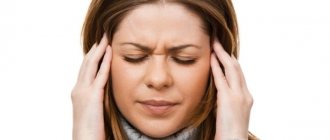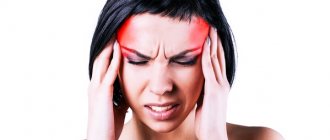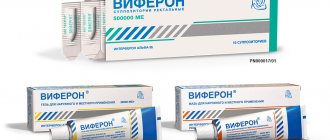The human body reacts to hypothermia in different ways. You can often see a characteristic pose when the shoulders rise towards the ears, the muscles in the abdomen and neck contract - the figure becomes somewhat hunched over. Due to the fact that the shoulder blades are in constant tension, the muscle that is responsible for raising them hardens, as a result of which shooting pain can be noted.
The symptoms of a cold head manifest themselves according to a similar principle. If one of the sides is blown, the head, neck, and back of the head will begin to ache, shooting pains in the ear may appear, and muscle tension in the back of the head will be noted.
What symptoms indicate that you have a headache?
The development of the disease is based on a certain mechanism. In the smooth muscles of the skull or neck, under the influence of a flow of cold air, local (limited) non-purulent inflammation occurs. Tonic tension occurs in the muscles, that is, spasm. It contributes to disruption of blood flow in small vessels, as a result, biochemical breakdown products begin to accumulate in the affected area, pain and tissue compaction appear.
The head is blown (symptoms and treatment in adults are described later in the article), which means that in 90% of cases there will also be stiffness when moving the neck and heaviness in the back of the head. It is caused by an inflammatory process in the muscles of the cervical spine or changes in the cranial nerve plexuses. As a result of hypothermia, these structures can swell, increase in size, and compress nearby organs.
Therefore, patients often complain of:
- one- or two-sided migraine-like pain in the occipital, temporal, vertex, parietal region of the head, intensifying when trying to turn or tilt the head; in more rare cases, pain is localized in the facial area;
- lumbago in the area of the eyes, ears, face, back of the head, forehead;
My head blew. Symptoms and treatment - a feeling of stiffness in the neck and shoulders, stiffness in head movements;
- loss of sensitivity and sensation of “crawling goosebumps” (paresthesia), pulsation at the temples;
- rare dizziness, blurred vision or spots before the eyes, ringing in the ears;
- moderate general malaise, weakness, apathy, weakness;
- chills, temperature rise to low-grade levels (37.5-38°);
- long periods of falling asleep, frequent awakenings, nightmares, night sweats;
- increased anxiety, irritability, tearfulness.
Probable Causes
The head is blown (symptoms and treatment in adults depend on the degree of hypothermia), which means you need to start therapy without delay. The treatment regimen is determined based on the cause of the development of symptoms and the severity of the pathological process.
Air conditioner
The cause of the disease can be prolonged exposure to air conditioning during the hot season, especially being under a direct stream of air. Therefore, office workers who are forced to stay at their workplace for 4-6 hours can often complain of a cold head.
Wet hair and strong wind
It can easily blow the head of athletes or dancers who sweated during training and immediately went out into the cold air. In addition, going outside with undried hair or sleeping at night with wet hair in a cold room can cause this condition.
Constant exposure to a cold air stream contributes to the development of a cold in the head, so this often happens when fishing, during a hiking trip, while hunting, or when working in the garden. A sweaty head under a hat can also cause a cold if there is a piercing cold wind outside.
Open doors and windows
It can get drafty when ventilating a room, with open windows on a train, on a bus, especially when there is a large difference in temperature outside and indoors.
Draft in the car
The driver's head was blown - a typical situation when driving at high speed with the windows open. Truck drivers often complain of a head cold. Symptoms that arise in adults require close attention and differentiation from other head diseases. If treatment is not started on time, serious consequences may develop.
Other Possible Causes
Other possible reasons include:
- Swimming and diving in cold springs, ice holes and natural reservoirs. Prolonged stay in water with low temperature contributes to the launch of inflammatory processes in the soft tissues of the head.
- Walking without hats in the cold season. This is how young boys and girls get headaches, trying to dress according to fashion, and not according to the weather.
- Riding on open water boats at high speed, especially after swimming in rivers, seas, lakes. On the water, the risk of hypothermia increases, which is associated with high air humidity, so high-speed walks on water transport can provoke the development of colds.
- Accommodation in regions with low temperatures (Yakutia, Chukotka and others). In these areas, you can catch a cold even in warm clothes, since at times gusts of wind and weather conditions reach critical levels.
- Chronic stress and constant physical fatigue. In these cases, the muscles of the body are always tight, blood circulation and lymph outflow are difficult, so you can catch a cold at any time from a light breeze.
The head is blown (symptoms and treatment in adults may vary due to concomitant diseases) - people with a predisposition who have chronic diseases often complain about this:
- sinusitis, frontal sinusitis, ethmoiditis;
- cervical osteochondrosis, cervical myositis, glenohumeral periarthritis;
- otitis, eustachitis;
- conjunctivitis, keratitis, uveitis;
- lymphadenitis; extensive furunculosis;
- erysipelas, eczema, abscesses on the face, neck, head;
- neuritis of the facial, trigeminal, oculomotor nerves;
- stomatitis, periodontitis, gingivitis, deep caries, formation of cysts in the oral cavity;
- injuries, wounds, bruises of the soft tissues of the face and skull.
With all these pathologies, inflammatory processes are localized in the cranial-occipital or facial part of the head, so with any hypothermia they can spread to nearby tissues.
It is easier to get a cold in people with a weakened immune system, suffering from severe chronic pathologies and acute infectious diseases.
Special risk groups include:
- People with immunodeficiencies - persistent disorders in which one or more parts of the immune system cannot protect the body from infections. With physiological deficits that accompany critical stages in the development of the body, it is easy to get a cold. Although the disease will take longer and be more difficult than in healthy people, recovery will be complete. But with primary or secondary immunodeficiencies, the disease can become seriously complicated or its treatment may be delayed for a long period. Common immunodeficiencies include DiGeorge, Duncan, Bruton, Louis-Bar syndrome, blood and lymph diseases.
- Patients with autoimmune pathologies. A malfunction occurs in their body, immune cells begin to “absorb” healthy human tissues, as a result, a chronic inflammatory process develops, which under unfavorable conditions (hypothermia, infection) begins to spread to other organs. Common autoimmune disorders include scleroderma, vasculitis, lupus erythematosus, and others.
- Patients suffering from diabetes, gout, and inflammatory diseases have a reduced immune status and a weakened body. Because of this, it is easier for them to catch a head cold than for healthy people.
Neck pain: what is it like?
Neck pain
Neck pain is a common symptom. According to medical statistics, every third adult has ever experienced neck pain. Right now, one in ten people have neck pain.
As a rule, pain in the neck is constant and aching. Sometimes the pain is accompanied by dizziness, nausea, and tinnitus. In some cases, the pain radiates (spreads) to the arms. Along with pain in the neck, pain in the heart area may also be felt, especially with an uncomfortable position. Even with neck pain, there may be complaints of limited neck mobility or a crunch in the neck when turning the head.
Differentiation of diagnosis if the head is blown
The head is blown (symptoms and treatment in adults may be similar to inflammatory diseases of brain tissue), which means that differential diagnosis needs to be carried out as soon as possible. There are often situations when it is necessary to identify symptoms that distinguish a head cold from more severe diseases caused by the penetration of bacteria or viruses into the body.
Distinguishing signs of a head cold from brain infections:
| Diseases | Signs | Treatment |
| Cold | It begins gradually, causing moderate heaviness and pain in the back of the head. Patients maintain satisfactory general condition and performance; the temperature is rare and does not rise above 37.5-38°. The duration of the acute phase of a cold is 2-5 days. | It is carried out at home, the basis is symptomatic remedies and a properly organized diet and rest. |
| Meningitis, encephalitis | It begins acutely with a rise in temperature to 38.5-39° and above. The general condition of the patients is extremely serious, accompanied by severe weakness, severe headaches, nausea, and vomiting. The duration of the disease is 7-14 days, rehabilitation after the disease is long. | Urgent hospitalization is required. In a hospital setting, intensive antibacterial and infusion therapy (drips are placed) is carried out. |
An important diagnostic distinguishing feature of inflammation of the meninges from a common cold of the head is the presence of a source of bacterial infection, that is, contact with the patient. But cases of the disease spreading upward, due to acute inflammatory pathologies of the ENT organs or as a complication of pneumonia are not excluded.
Common methods of diagnosing a head cold include:
- collecting complaints and studying the life history of patients (lifestyle, profession, chronic diseases, injuries, bad habits);
- an objective examination reveals hyperemia, swelling and hardening of soft tissues, the presence of lymphadenitis, injuries;
- instrumental diagnostics using ultrasound scanning, computed tomography, x-rays, and MRI is necessary in cases of suspected infectious processes, trauma, or neoplasms;
- laboratory methods make it possible to identify the causative agent of infection (using smears), analyze the biochemical composition of the blood, and indirectly determine the degree of inflammatory changes using a general blood and urine test.
Symptoms
If you have a cold head, the first signs of hypothermia appear after about a few hours. It all starts with intense pain, which gradually intensifies. A person can ignore unpleasant sensations in the head, because they are often explained by harmless reasons. But, if the head shows through, then other characteristic signs will be added.
Main symptoms:
- Increased body temperature, fever or chills may occur.
- Painful sensations that occur when turning the neck.
- When the head is hypothermic, sensitivity to light may increase, which makes you want to hide in a dark room.
- General weakness in the body, noise in the ears.
- If your head is blown, your blood pressure may jump.
- Shooting sensations in the temples are common.
When a person has a head cold, the inflammation can spread to other organs: the nose, ears or throat. It all depends on where the infectious focus is located. If a runny nose occurs, as well as a sore throat, then the progress of the pathological condition can be suspected. If you have a headache, it is important to start treatment immediately.
First aid
If you experience pain due to a head cold, you can take painkillers (Citramon, Spazgan and others) and go to bed. You can moderately insulate your head - wear a scarf or tie a scarf. It would be rational to increase the water regime, this will help to quickly remove harmful substances from the body. It is useful to drink herbal teas with an anti-inflammatory effect, containing chamomile, St. John's wort, and calendula.
It is important to ensure information peace, turn off the loud sound of the TV, radio or reduce it as much as possible.
If taking painkillers and proper rest has brought significant relief and no new complaints have arisen, you can continue treatment at home. If the condition worsens, then it is time to contact your local physician for examination and treatment.
How to treat a cold head in adults
The head is blown (symptoms and treatment in adults are determined depending on the severity of the disease), which means you need to start taking symptomatic medications.
Drug treatment
To reduce fever or relieve chills use:
- Aspirin;
- Paracetamol;
- Ibuprofen;
- Cefikon.
In order to reduce pain, the following are prescribed:
- Analgin;
- Spazgan;
- Nice;
- Ketarol.
The following will help reduce swelling and inflammation of soft tissues:
- Arthrozan;
- Diclofenac;
- Ortofen.
The following will help strengthen the body's overall resistance:
- Combilipen;
- combined vitamin and mineral complexes;
- biological supplements containing omega-3 acids.
If the head is blown out along with the neck and shoulder girdle, the following is added to the treatment:
- warming and anti-inflammatory ointments;
- several physical procedures (ultrasound, electrophoresis, magnetic therapy);
- exercise therapy;
- massage.
If lymphadenitis occurs, antibacterial therapy is prescribed (a course of intramuscular injections of Ceftriaxone).
Head colds caused by viral infections may require the use of antiviral drugs and interferons:
- Arbidol.
Arbidol for adults - Amexin.
- Ingaverin.
Home treatment assistance
At home, a light stroking massage of the head and neck can help. It is important to perform movements in the direction from the crown and crown down, from the back of the head and temples down, that is, in accordance with the blood flow through the capillary plexuses.
My ear and the right side of my head hurt – what’s there?
When the right side of your head is blown and your ear hurts, what could it be? One might suspect:
- neuritis and trigeminal neuralgia;
- tunnel syndrome;
- neuralgia of the glossopharyngeal nerve;
- purulent otitis media and internal otitis;
- arthritis of the temporomandibular joint, including purulent;
- acute sinusitis.
Possible consequences if left untreated
The inflammatory process may worsen if, at the height of the disease, patients refuse to wear warm hats during the cold season, stay in a draft for a long time, or continue swimming in bodies of water with low temperatures. Serious consequences arise not only without treatment, but also as a result of negligent attitude towards health.
Neuritis of the facial (trigeminal) nerve
The disease begins suddenly and is accompanied by:
- severe, burning pain;
- numbness;
- facial paresthesias.
Then one-sided asymmetry and lack of facial expressions appear.
Treatment of the disease is long-term, complex with active use:
- non-steroidal anti-inflammatory drugs;
- local anesthetics;
- hormones;
- biostimulants.
Meningitis
This is an acute infectious disease accompanied by characteristic symptoms:
- stiff neck;
- high temperature;
- severe intoxication.
Patients with meningococcal infection are hospitalized, and a course of antibacterial therapy is carried out in the hospital.
Otitis
Inflammatory process in one or more parts of the hearing aid. It is characterized by sharp shooting pains in the ear, the appearance of serous or purulent exudate from the ear canal. The disease can be treated with antimicrobial and anti-inflammatory drugs.
Inflammation of the maxillary or frontal sinuses (sinusitis, frontal sinusitis)
As a result of the spread of the pathological process along the descending pathways, inflammatory changes can affect the sinuses located in the forehead and nose. Mucous or purulent contents begin to actively accumulate in them.
The result is:
- pressing headaches;
- runny nose;
- snoring during sleep;
- sometimes a rare cough.
The basis of treatment for these diseases is the use of antibiotics and vasoconstrictor drops.
Tendinitis
This is a disease of the musculoskeletal system that affects the tendons. It manifests itself as difficulties in moving the limbs, dull, prolonged pain.
The following are used in treatment:
- non-steroidal drugs;
- chondroprotectors;
- vitamins;
- physiotherapy;
- massage;
- physiotherapy.
Conjunctivitis
This is an ophthalmological pathology associated with inflammatory changes in the outer shell of the eyes.
Signs of the disease are:
- redness of the mucous membrane of the eye;
- burning;
- itching;
- photophobia;
- thick discharged exudate from the conjunctival sac.
Treatment of the disease consists of frequent instillation of eye drops with an antimicrobial effect.
Lymphadenitis
The pathology is expressed in enlargement and pain of regional lymph nodes located at the site of localization of the inflammatory process. Without treatment, the disease can spread to other lymphatic vessels. The basis of treatment for lymphadenitis is the intramuscular use of cephalosporin antibiotics.
Arachnoiditis
Arachnoiditis refers to diseases of the nervous system and is characterized by pathological changes in the arachnoid membrane of the brain or inflammation of the spinal cord.
Signs of the disease include:
- persistent headaches;
- dizziness;
- pathologies of vision and hearing;
- epileptoid seizures.
Treatment tactics depend on the type of inflammation and its location; it is divided into medicinal and surgical.
A headache is a common problem. Symptoms and treatment in adults are often overlooked. It is enough to exclude the factors that provoked this condition, carry out symptomatic therapy, and the patient’s health is restored within 5-7 days. It all depends on the cause of hypothermia, the general immune status of the patient and concomitant diseases. In general, the prognosis for a head cold is favorable; only in advanced cases can complications arise that require long-term treatment or emergency hospitalization.
Prevention
Measures to prevent inflammatory processes of the main organ of the central nervous system and their complications are quite simple. They do not require much effort and time: you just need to pay attention to your health. There are several recommendations that will help avoid negative consequences:
- be sure to wear a hat in winter and autumn, especially in cold weather;
- do not sit in a draft;
- observe the rules of hygiene;
- avoid overheating and hypothermia of the head;
- boil water before drinking;
- be sure to dry your hair before going outside;
- wash vegetables and fruits thoroughly;
- The baby should wear a cap even in the room.
In addition, it is necessary to take care of strengthening the immune system. Do gymnastics and hardening, try to give up bad habits, and then even in the cold season, the likelihood of infectious and inflammatory processes will be minimized.










